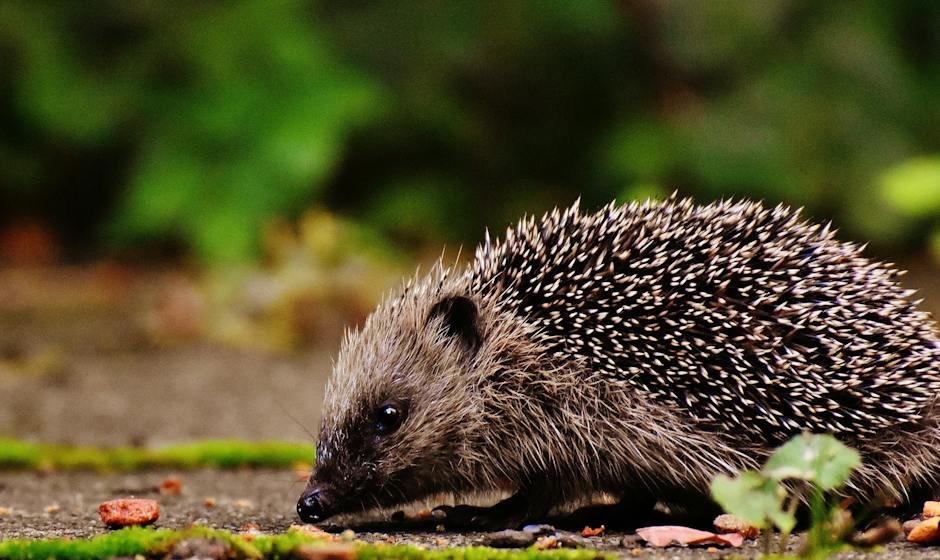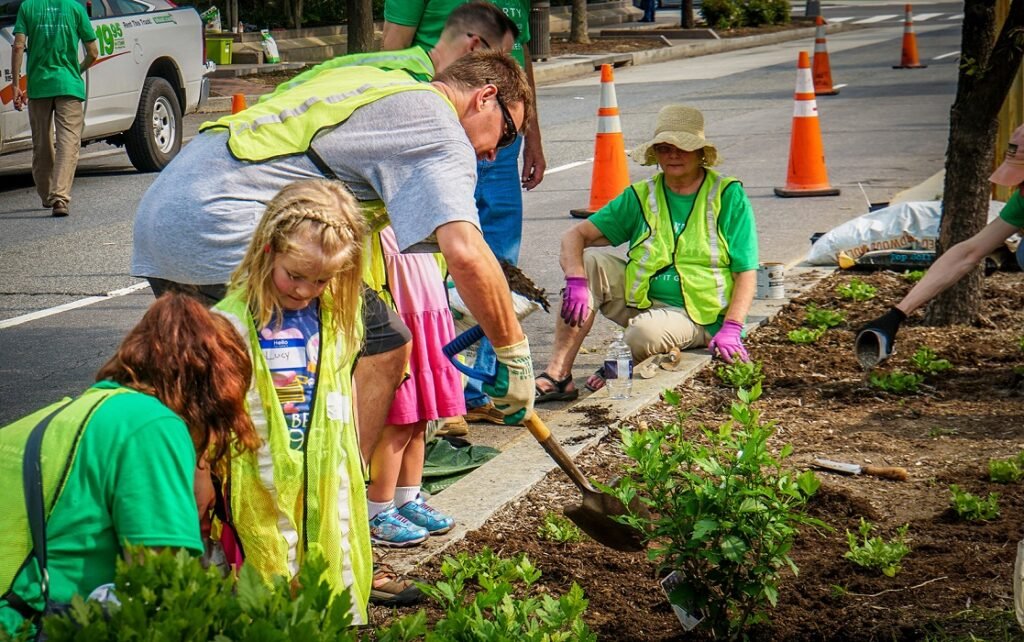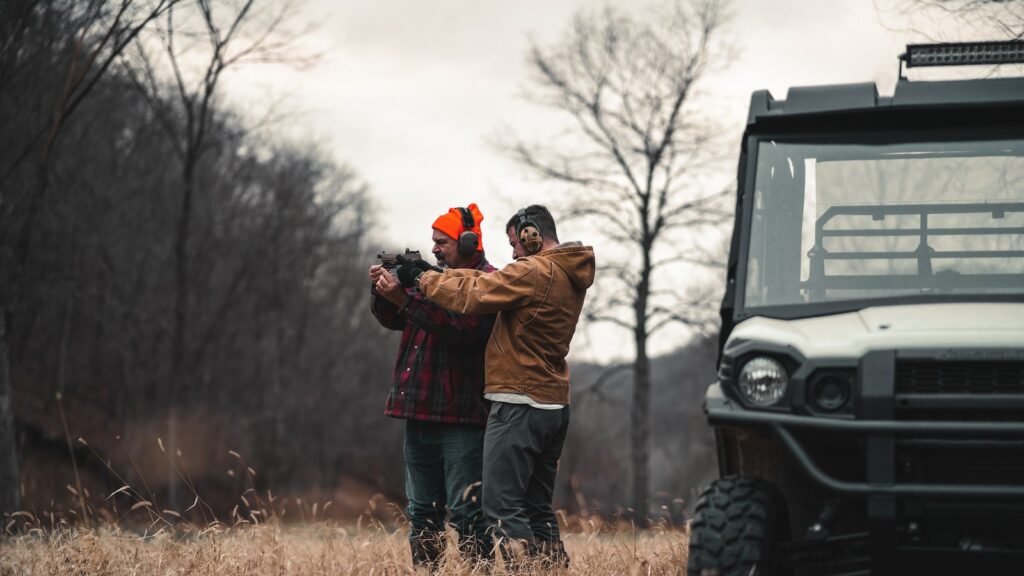Now Reading: The Importance of Safety in Foraging
-
01
The Importance of Safety in Foraging

The Importance of Safety in Foraging
Imagine wandering through a lush forest, surrounded by a symphony of birdsong and the earthy scent of moss underfoot. As you venture deeper, your eyes glimmer at the sight of vibrant mushrooms peeking out from beneath fallen leaves, and your fingertips tingle with anticipation. Foraging, the art of gathering wild edible plants and fungi, can be an enchanting experience, connecting us with nature’s abundant offerings. However, amidst this botanical treasure hunt, one factor often goes unnoticed: safety. The excitement of uncovering nature’s pantry must be tempered with caution, for without a firm understanding of the potential risks, our foraging endeavors may lead us down a perilous path. This article delves into the all-important topic of safety in foraging, shedding light on its significance and equipping enthusiasts with the knowledge to enhance their wilderness ventures.
Table of Contents
- The Joys and Dangers of Foraging: A Balanced Perspective
- Creating a Safe Foraging Environment: Establishing the Ground Rules
- Identifying Edible Plants: Building Knowledge and Confidence
- Mitigating Risks: Safety Precautions and Techniques
- Embracing Sustainability: Ethical Foraging Practices
- Q&A
- In Conclusion

The Joys and Dangers of Foraging: A Balanced Perspective
Foraging, the act of gathering wild food from nature, offers a unique connection to our environment, fostering a sense of self-sufficiency and appreciation for the bounties of nature. The joy of stumbling upon a hidden patch of ripe berries or the satisfaction of harvesting mushrooms from the forest floor can be immensely fulfilling. Not only does foraging provide natural and organic sustenance, but it also allows us to reconnect with the ancestral knowledge passed down through generations.
However, it is important to approach foraging with caution, as there are inherent dangers that must be acknowledged. One of the primary risks lies in misidentification, as confusing an edible plant or mushroom with a toxic counterpart can have severe consequences. It is crucial to thoroughly educate oneself on the local flora, consulting reliable sources or experienced foragers before venturing into the wild. Additionally, foraging in certain areas may have legal restrictions or regulations, aimed at preserving delicate ecosystems or protecting endangered species.
- Benefits of foraging:
- Connection to nature and the environment
- Self-sufficiency and satisfaction of gathering one’s own food
- Rediscovering ancestral knowledge and traditions
- Access to natural and organic sustenance
- Dangers of foraging:
- Risk of misidentifying toxic plants or mushrooms
- Potential legal restrictions in certain areas
- Environmental impact if not done sustainably
- Injury or encounters with wildlife
With an understanding of both the joys and dangers, foraging can be approached as a mindful and responsible activity. By embracing the wonders of nature while prioritizing safety and sustainability, one can fully appreciate the treasures that lie within our natural surroundings.

Creating a Safe Foraging Environment: Establishing the Ground Rules
Ensuring a safe foraging environment is crucial for the well-being of both foragers and the ecosystem they interact with. To establish the ground rules, it’s important to consider a few key factors.
1. Establish Clear Boundaries: Clearly mark the designated foraging area to set the boundaries for participants. This can be done using fences, signage, or natural landmarks. Creating visual cues will help ensure everyone knows where they can safely forage and prevent inadvertently encroaching on protected areas.
2. Communicate Safety Guidelines: Provide participants with a comprehensive set of guidelines to follow during their foraging experience. These guidelines should include instructions on identifying edible plants, understanding potential hazards, and respecting the environment. It’s crucial to emphasize the importance of leaving no trace and avoiding damaging the ecosystem.
3. Educate about Local Regulations: Familiarize foragers with any relevant local regulations, such as permits or restrictions, that govern foraging activities in the area. This information can be shared through pamphlets or signs to ensure all participants understand and comply with the rules set forth by local authorities.
By implementing these ground rules, we can create a safe foraging environment that promotes enjoyment, education, and sustainability. Remember, safety should always be a priority when exploring the bountiful offerings of the natural world.
Identifying Edible Plants: Building Knowledge and Confidence
Embarking on the journey of identifying edible plants can not only expand your botanical knowledge but also boost your confidence in foraging for food in the wild. Whether you are a nature enthusiast, a survivalist, or simply someone looking to connect with nature on a deeper level, developing the skills to identify edible plants is an invaluable asset.
Building your knowledge starts with familiarizing yourself with various plant species and understanding their characteristics. One effective method is to create a list of plants found in your region and study their physical traits, growth habitats, and distinctive features. By learning to differentiate between similar-looking plants, such as poisonous lookalikes, you can ensure your safety and enjoyment when foraging.
Additionally, gaining confidence in identifying edible plants involves hands-on practice and guidance from experienced foragers or botanists. Joining local plant identification walks or workshops can expose you to a wealth of knowledge, as you learn to interpret field guides and recognize edible plants in their natural environment. Remember, building knowledge and confidence in identifying edible plants is a continuous process, but the rewards of self-sustainability and a deeper connection with nature are more than worth it.

Mitigating Risks: Safety Precautions and Techniques
Ensuring safety in any given situation is of paramount importance. By taking appropriate safety precautions and implementing effective techniques, one can significantly mitigate risks and create a secure environment for all involved.
Identifying potential hazards:
- Conduct a thorough risk assessment to identify potential hazards.
- Ensure all signs of danger are clearly marked and communicated to everyone.
- Regularly inspect equipment, machinery, and infrastructure to detect any potential risks.
- Utilize warning systems and alarms to alert individuals in case of emergencies.
Implementing safety measures:
- Provide comprehensive safety training to all personnel, emphasizing the importance of following protocols and guidelines.
- Maintain a well-organized and clean environment to prevent accidents caused by clutter or obstructions.
- Equip individuals with appropriate personal protective equipment (PPE) such as helmets, gloves, and safety goggles.
- Establish emergency response plans and conduct regular drills to ensure preparedness.
Employing safety techniques:
- Encourage open communication among team members to report and address safety concerns promptly.
- Implement regular safety audits to assess compliance and identify areas for improvement.
- Promote a culture of safety consciousness, where individuals actively look out for each other’s well-being.
- Continuously stay updated with industry standards and best practices to adopt the latest safety techniques.
By adhering to these safety precautions and techniques, we can mitigate risks and prioritize the well-being of everyone involved.
Embracing Sustainability: Ethical Foraging Practices
As nature enthusiasts, it is our responsibility to protect and preserve the bountiful resources that the natural world has to offer. Ethical foraging practices are an important way to ensure the sustainability of our ecosystems. By foraging in an ethical manner, we can minimize our impact on the environment and promote the growth and regeneration of plant species.
- Respecting biodiversity: One of the fundamental principles of ethical foraging is to respect biodiversity. It is crucial to only harvest a limited amount of any given plant species, allowing it to thrive and reproduce naturally. By doing so, we contribute to the overall health and biodiversity of our ecosystems.
- Knowing the local flora: Familiarizing ourselves with the diverse flora present in our surrounding areas is essential before engaging in foraging activities. Knowing how to correctly identify different species ensures that we do not unintentionally harm or harvest endangered plants. Additionally, understanding the life cycle and natural habitats of various plants helps us make informed decisions about when and where to forage responsibly.
- Leaving no trace: A key aspect of ethical foraging is leaving no trace behind. It is vital to avoid damaging the surrounding habitat while foraging. This means staying on designated paths, avoiding trampling delicate vegetation, and refraining from using tools or methods that could harm the environment.
- Sharing knowledge: By sharing our knowledge of ethical foraging practices, we can inspire others to embrace sustainability and make a positive impact on the environment. Teaching future generations about the importance of ethical foraging helps ensure the longevity of these practices and the protection of our ecosystems for years to come.
By adhering to these ethical foraging practices, we can foster a harmonious relationship with nature. Let us embrace sustainability and become stewards of the environment, preserving the beauty and diversity of our natural world for generations to come.
Q&A
What is foraging and why is it important?
Foraging is the act of searching for wild food resources. It is important because it allows individuals to reconnect with nature, promotes sustainability, and encourages self-sufficiency.
Why is safety essential when foraging?
Safety is crucial while foraging because it helps ensure that you don’t mistakenly consume poisonous plants or disturb harmful creatures. It also helps in minimizing environmental damage and respecting the habitats of other living organisms.
What are some common safety guidelines for foragers?
Some common safety guidelines for foragers include being able to correctly identify edible plants, using proper tools and equipment, being cautious of potential hazards in the environment, and always foraging in moderation to preserve natural resources.
How can a beginner forager assess the safety of a particular area?
Beginner foragers can assess the safety of an area by conducting thorough research on the local flora and fauna, talking to experienced foragers or park rangers for advice, and being observant of signs or warnings indicating any potential risks or protected areas.
What are some signs that a plant or mushroom could be poisonous?
Signs that a plant or mushroom could be poisonous include bright colors, strong smells, unusual textures, or the absence of similar known edible species. Always consult a reliable field guide or an expert before consuming anything unfamiliar.
What steps should foragers take to protect the environment while foraging?
Foragers should take steps to protect the environment while foraging by respecting nature’s balance, only harvesting what is needed, avoiding sensitive habitats, not damaging plants or trees, and leaving no trace by cleaning up after themselves.
What is the impact of foraging on plants and animals?
Foraging, when done responsibly, can have a minimal impact on plants and animals. However, excessive foraging or harvesting without considering the sustainability of the resources can disrupt the biodiversity and habitats of certain species.
Why is it important to legally and ethically forage?
Legally and ethically foraging means respecting local regulations, private property, and cultural practices linked to foraging. Doing so helps protect fragile ecosystems, maintain access to public lands, and ensure the preservation of traditional foraging rights.
In Conclusion
As we conclude our deep dive into the enchanting world of foraging, let us not forget the crucial role that safety plays in this ancient practice. Just as a symphony requires harmony among its various instruments, foraging seamlessly blends our connection with nature and our innate survival instincts. And like any virtuoso performer, we must exercise caution, knowledge, and mastery to truly thrive.
Through this enlightening journey, we have witnessed the bountiful treasures of the wild, discovered the secrets hidden beneath mossy rocks, and reveled in the flavors of nature’s pantry. Yet, amidst this sensory tapestry, a gentle reminder echoes—a whisper in the wind—that safety should forever take center stage in our foraging symphony.
What good is savoring the ripest blackberries, inhaling the sweet fragrance of wild mushrooms, or indulging in the tartness of fresh sorrel if it jeopardizes our well-being? Safety is an unyielding guardian, demanding our reverence and vigilant attention. It ensures that our forays into nature’s abundant embrace remain a journey of discovery, rather than a perilous adventure.
As we embark upon each foraging expedition, our path is paved with tried and true principles. We familiarize ourselves with the flora and fauna of the wild, absorbing the wisdom passed down through generations. Identifying the edible from the toxic, the poisonous from the medicinal, is a dance that demands our utmost attention. We equip ourselves not only with the tools of the trade but also with the knowledge necessary to navigate the verdant trails.
The symphony of foraging harmonizes not only with nature but also our own bodies. Listening to the rhythmic pace of our heartbeats, we honor our physical limitations and respect the boundaries that nature sets. Our echoes of adventure always beckon under the protective gaze of daylight, for with darkness comes a veil of uncertainty.
Let us, then, embrace the importance of safety as we traverse the tapestry of foraging together. For in the delicate balance between risk and reward lies the essence of this ancient art. Cherishing the wondrous gifts bestowed upon us by the wild necessitates constant evolution. As nature weaves its enigmatic melodies, safety serves as our unwavering conductor, guiding us through rhythms known and unknown.
So, my fellow foragers, with safety at our core, we honor the ancestral ties that bind us to this ageless pursuit. Let us wander, discover, and taste the symphony of the wild, acutely aware that safety is not just a guardian—it is the very breath that sustains our harmonious journey through the untamed realms of nature.
As an affiliate, my content may feature links to products I personally use and recommend. By taking action, like subscribing or making a purchase, you’ll be supporting my work and fueling my taco cravings at the same time. Win-win, right?
Want to read more? Check out our Affiliate Disclosure page.





